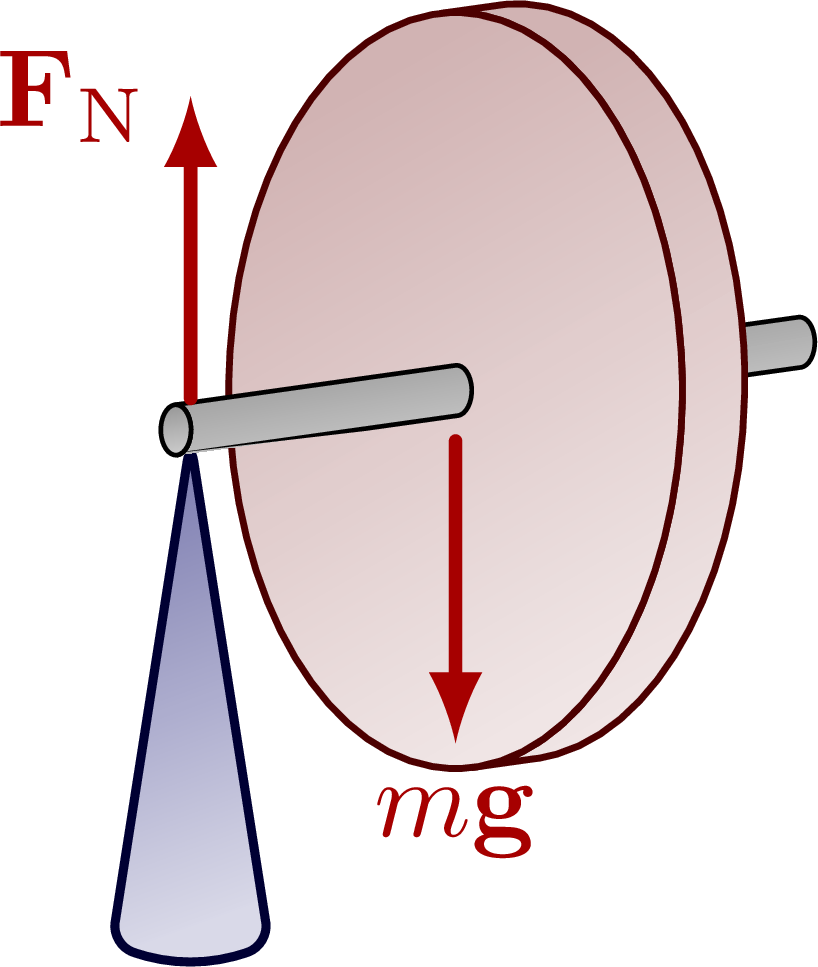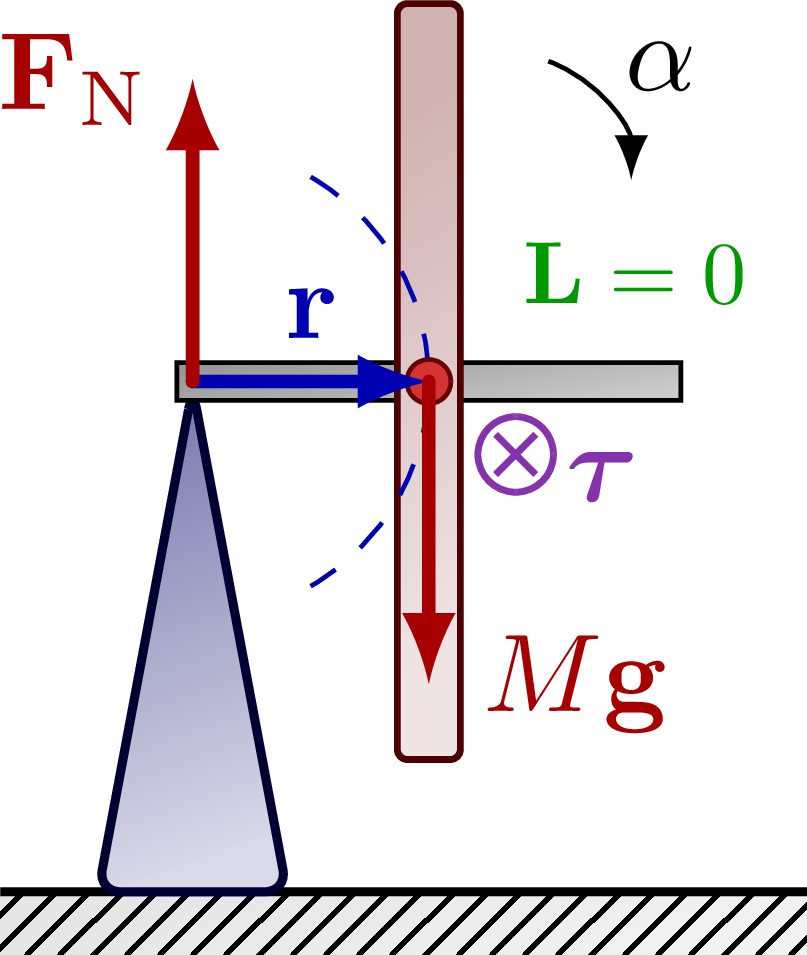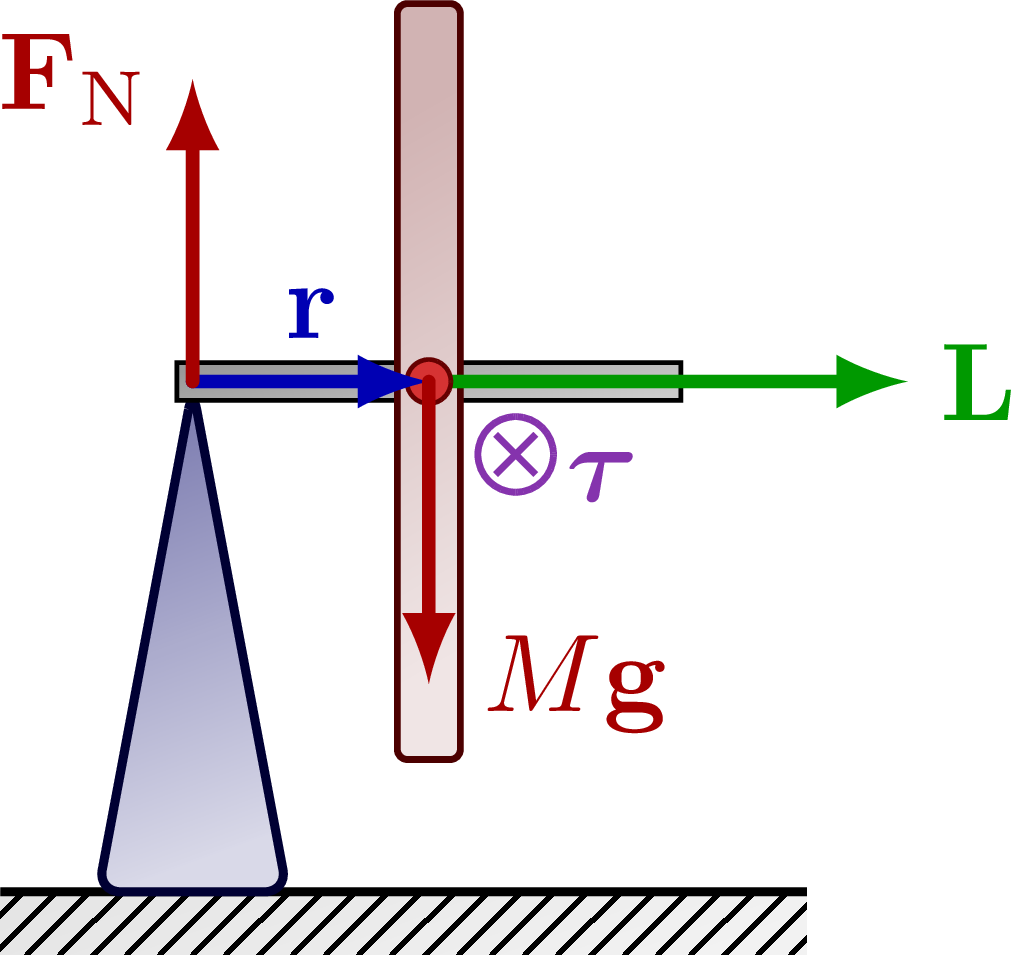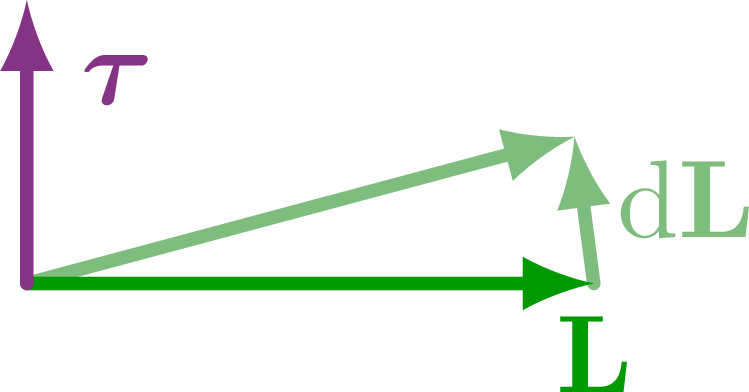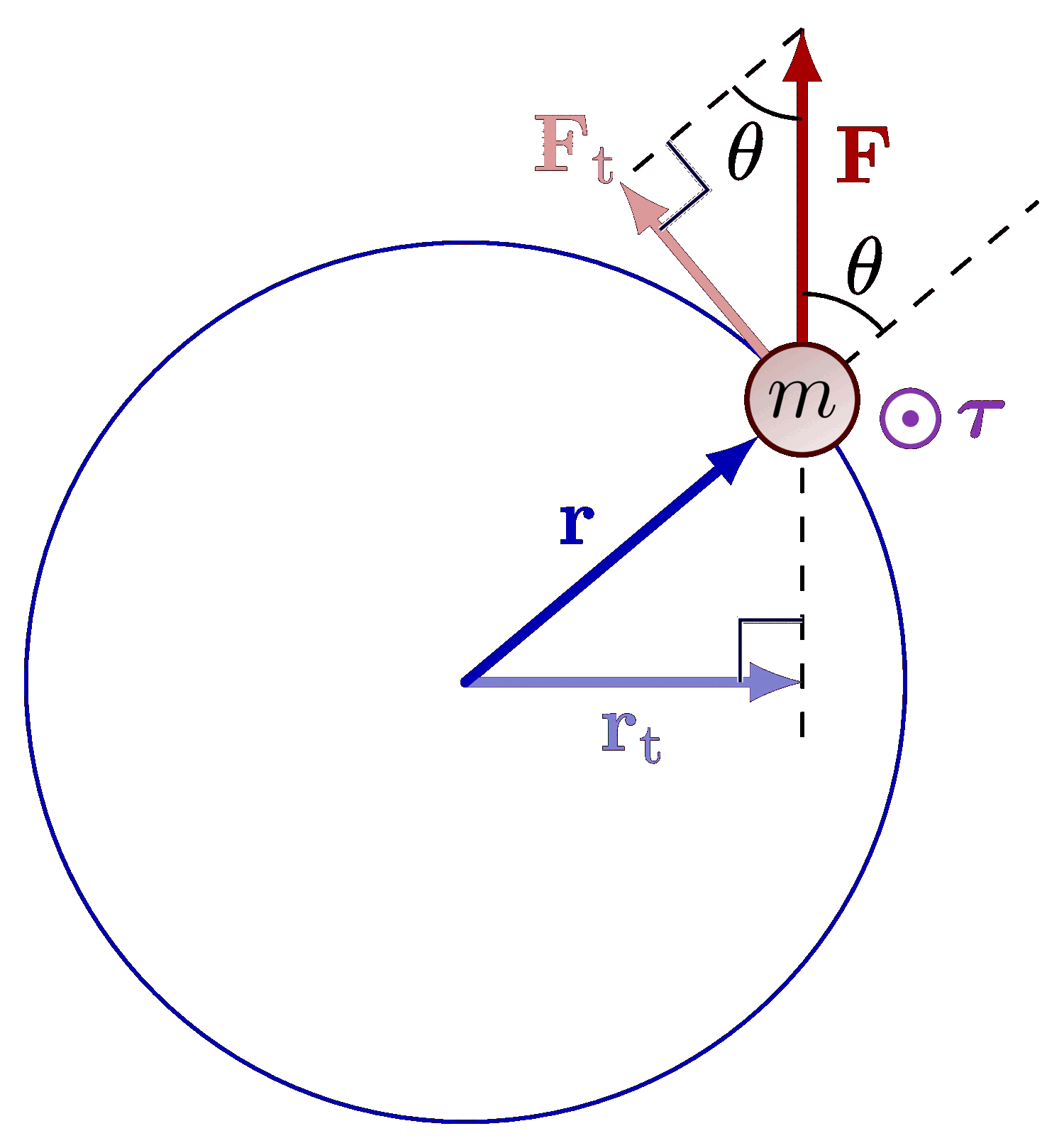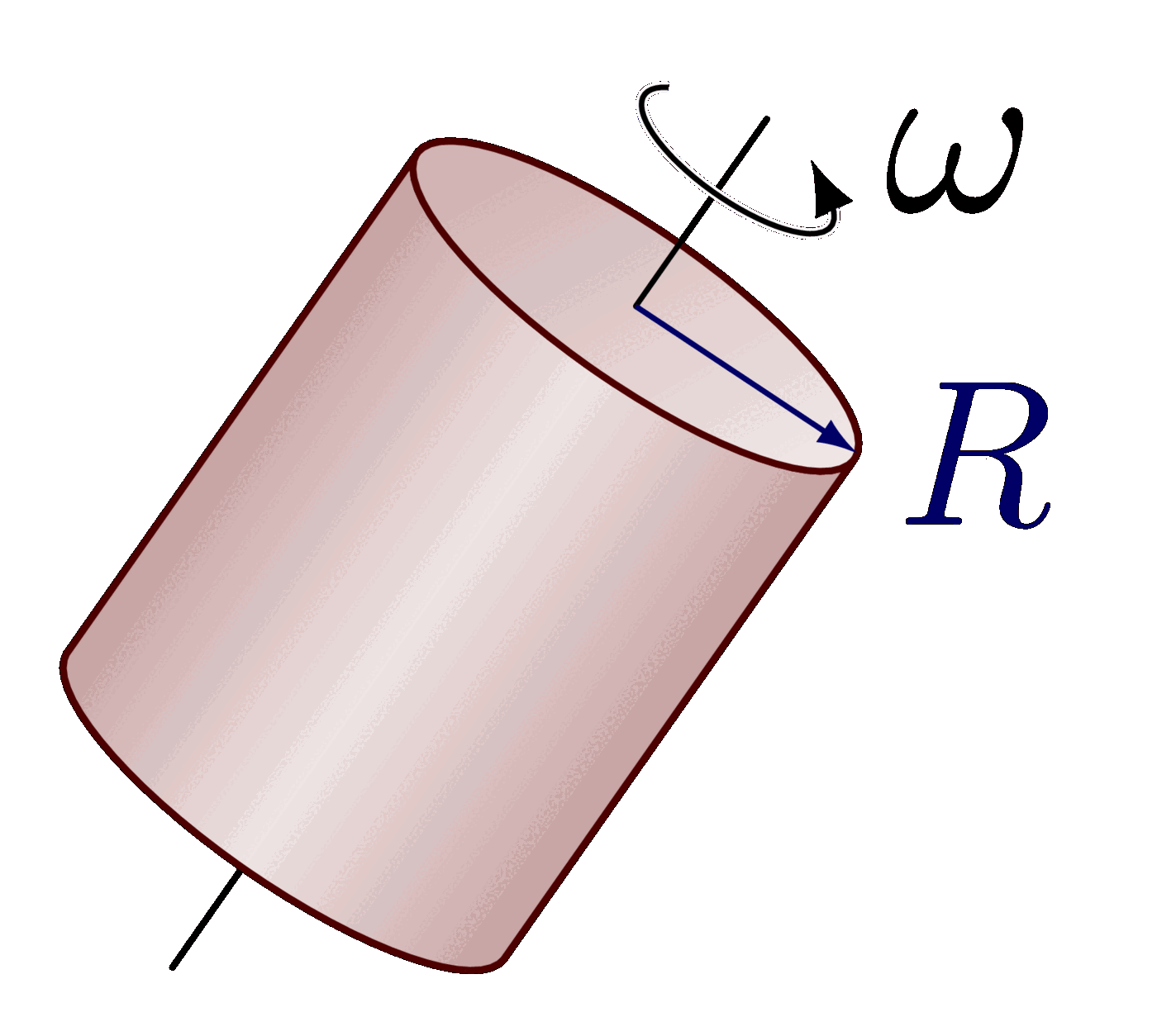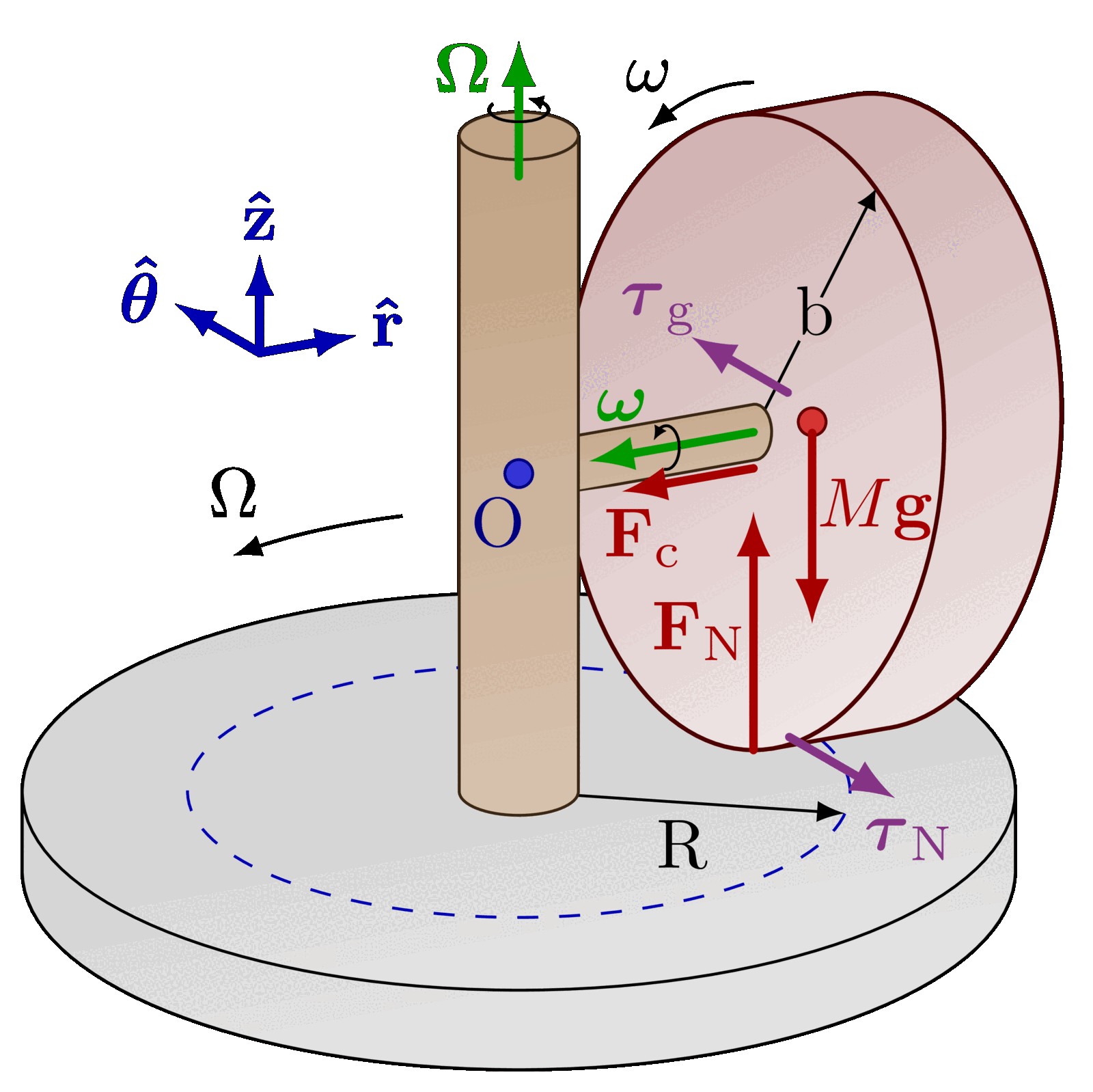Precession of a rotating flywheel on a support.
For more related figures, please see the “angular momentum” and “torque” tag.
Edit and compile if you like:
% Author: Izaak Neutelings (October 2020)\documentclass[border=3pt,tikz]{standalone}\usepackage{physics}\usepackage{tikz}\usepackage[outline]{contour} % glow around text\usetikzlibrary{calc}\usetikzlibrary{angles,quotes} % for pic\usetikzlibrary{arrows.meta}\usetikzlibrary{patterns}\tikzset{>=latex} % for LaTeX arrow head\contourlength{1.35pt}\colorlet{xcol}{blue!70!black}\colorlet{vcol}{green!60!black}\colorlet{myred}{red!65!black}\colorlet{mypurple}{blue!60!red!80}\colorlet{acol}{red!50!blue!80!black!80}\tikzstyle{rvec}=[->,xcol,very thick,line cap=round]\tikzstyle{vvec}=[->,vcol,very thick,line cap=round]\tikzstyle{myarr}=[{Latex[length=3,width=3]}-,xcol]\tikzstyle{myarr2}=[{Latex[length=2,width=3]}-{Latex[length=2,width=3]}]\tikzstyle{force}=[->,myred,very thick,line cap=round]\tikzstyle{Fproj}=[force,myred!40]\tikzstyle{CM}=[draw=red!40!black,fill=red!80!black!80]\tikzstyle{mass}=[line width=0.6,draw=red!30!black, %rounded corners=1,top color=red!40!black!30,bottom color=red!40!black!10,shading angle=30]\tikzstyle{ground}=[preaction={fill,top color=black!10,bottom color=black!5,shading angle=20},fill,pattern=north east lines,draw=none,minimum width=0.3,minimum height=0.6]\tikzstyle{metal}=[fill,top color=black!40,bottom color=black!20,shading angle=10]\def\r{0.05} % pulley small radius\tikzset{pics/Tin/.style={code={\def\R{0.12}\draw[pic actions,line width=0.6,#1,fill=white] % ,thick(0,0) circle (\R) (-135:.75*\R) -- (45:.75*\R) (-45:.75*\R) -- (135:.75*\R);}},pics/Tout/.style={code={
Click to download: dynamics_precession.tex • dynamics_precession.pdf
Open in Overleaf: dynamics_precession.tex


